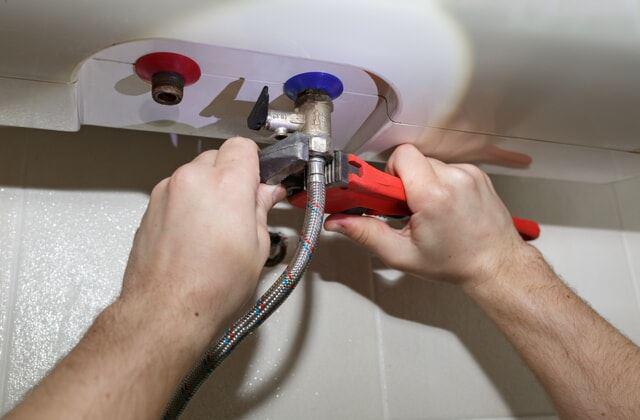How to Care for Your Home's Hot Water System Properly
How to Care for Your Home's Hot Water System Properly
Blog Article
Every person has got their own individual perception about Tips For Maintaining Your Hot Water Heater.

Warm water is necessary for everyday comfort, whether it's for a refreshing shower or cleaning meals. To guarantee your hot water system runs efficiently and lasts much longer, routine maintenance is crucial. This short article offers practical pointers and insights on just how to preserve your home's warm water system to prevent disruptions and pricey repair services.
Introduction
Keeping your home's hot water system may seem overwhelming, however with a few simple actions, you can guarantee it operates efficiently for many years ahead. This guide covers every little thing from understanding your hot water system to DIY maintenance pointers and recognizing when to employ expert aid.
Significance of Keeping Your Hot Water System
Routine upkeep not only expands the lifespan of your hot water system yet also ensures it runs efficiently. Ignoring maintenance can result in lowered efficiency, higher power costs, and even premature failure of the system.
Indicators Your Hot Water System Requirements Upkeep
Knowing when your hot water system requires attention can stop major concerns. Look out for indicators such as inconsistent water temperature level, unusual noises from the heating unit, or rustic water.
Recognizing Your Hot Water System
Before diving right into upkeep tasks, it's practical to recognize the basic elements of your warm water system. Commonly, this includes the water heater itself, pipes, anode poles, and temperature controls.
Regular Monthly Upkeep Tasks
Regular monthly checks can aid capture small issues before they escalate.
Flushing the Hot Water Heater
Purging your hot water heater removes sediment accumulation, boosting efficiency and extending its life.
Monitoring and Changing Anode Rods
Anode poles avoid rust inside the storage tank. Evaluating and changing them when broken is essential.
Checking and Readjusting Temperature Level Setups
Readjusting the temperature level setups ensures optimal performance and safety.
DIY Tips for Maintenance
You can perform several maintenance tasks on your own to maintain your hot water system in leading problem.
Looking for Leakages
Consistently evaluate pipes and links for leaks, as these can result in water damage and greater costs.
Examining Stress Relief Valves
Evaluating the pressure safety valve ensures it works correctly and protects against excessive pressure buildup.
Insulating Pipelines
Protecting hot water pipes minimizes warm loss and can save energy.
When to Call a Specialist
While do it yourself maintenance is advantageous, some issues need professional proficiency.
Complex Concerns Needing Professional Aid
Instances include major leakages, electrical troubles, or if your hot water heater is regularly underperforming.
Routine Expert Upkeep Benefits
Specialist maintenance can consist of extensive inspections, tune-ups, and making certain conformity with security criteria.
Final thought
Normal maintenance of your home's warm water system is vital for efficiency, long life, and expense financial savings. By complying with these pointers and understanding when to look for professional aid, you can make sure a reliable supply of warm water without unexpected disturbances.
How to Maintain an Instant Hot Water Heater
Before tinkering with your hot water heater, make sure that it’s not powered on. You also have to turn off the main circuit breaker and shut off the main gas line to prevent accidents. Also turn off the water valves connected to your unit to prevent water from flowing into and out of the appliance. 2. When you’re done, you have to detach the purge valves’ caps. These look like the letter “T†and are situated on either side of the water valves. Doing so will release any pressure that has accumulated inside the valves while at the same time avoid hot water from shooting out and burning your skin. 3. When the purge valves’ caps are removed, you have to connect your hosing lines to the valves. Your unit should have come with three hoses but if it didn’t, you can purchase these things from any hardware or home repair shops. You can also get them from retail stores that sell water heating systems. Read the user’s manual and follow it to complete this task properly. When the hosing lines are connected, open the purge port’s valves. 4. You should never use harsh chemical cleaners or solutions when cleaning your unit. Make use of white vinegar instead. It should be undiluted and you’ll probably use about 2 gallons. 5. Now flush your water heater. This task should probably take about 40 minutes. We can’t give you specific directions for this because the procedure is carried out depending on the type, model and brand of your heater. With that being said, refer to the user’s manual. 6. When you’re done draining the unit, you have to turn off the purge port valves again. Remove the hosing lines that you earlier installed on each of the water valves. Put the valve caps (purge port) back in their respective places and be very careful so as not to damage the rubber discs that are found inside these caps. 7. Now that everything’s back in place, check your user’s manual again to find out how to reactivate your water heating system. 8. Once it is working, turn one of your hot water faucets on just to let air pass through the heater’s water supply pipes. Leave the tap on until water flows smoothly out of it. https://www.orrplumbing.com/blog/2014/september/how-to-maintain-an-instant-hot-water-heater/

As a fervent person who reads about Water Heater Maintenance Tips You Can't Afford to Forget, I was thinking sharing that article was a good idea. Please take a moment to distribute this post if you enjoyed reading it. I truly appreciate reading our article about What Kind of Maintenance Do Water Heaters Need?.
Order Repair Report this page